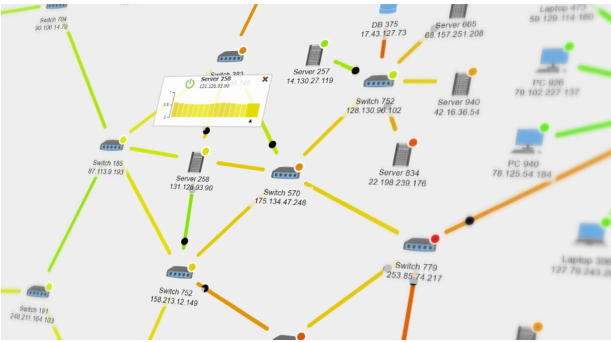2021
Project Title:
Semi Line Rate Deep Learning Traffic Classifier Using NVIDIA Programmable switch
Supervisors:
Idan Barnea, Matty Kadosh, Aviel Glam, Eran Tavor
Description:
In this project the students will use NVIDIA (Mellanox) programmable switch and Deep Learning methods to classify network traffic at semi-line rate. The students will use cutting-edge technology: data plane programming using P4. The main effort in this project will be to leverage NVIDIA's technology and an existing AI model to do semi line rate classification of encrypted traffic.

Project Title:
Ethereum Blockchain Mempool Activity Recorder
Supervisors:
Avi Mizrahi, Eran Tavor
Description:
The popular cryptocurrency Bitcoin attracts attention to its underlying technology, the Blockchain. Blockchain systems are databases based on chain of blocks, and each block is composed of set of transactions. To form a new block at the top of the chain, nodes in the system share new transactions between them, until one of them can pack a set into new block. For that, nodes in the network maintain a local pool of pending transactions, usually called ‘mempool’. Mempool synchronization takes major part of the network bandwidth, hence it is valuable to find an efficient algorithm for it. The purpose of the project is to generate a dataset for transaction arrival times for at least two nodes and analyze it.

Project Title:
QUIC SPIN Bit implementation and Analysis
Supervisors:
Eran Tavor
Description:
QUIC is a secure general-purpose, encrypted, multiplexed, and low-latency transport protocol designed from the ground up to improve transport performance for HTTPS traffic. QUIC has recently (May 2021) became RFC standard (RFC 9000) and is expected to become the dominant transport protocol in the Internet over TCP. Most of QUIC packets are encrypted. Not only the payload is encrypted but also most of the header. This situation makes it very difficult for the ISP (Internet Service Provider) or any other middlebox to monitor the network and enforce regulatory measures to keep the network up and running. Important parameters for ISPs to monitor network health RTT (Round Trip Time) and packet Loss Rate estimations . When RTT or Loss Rate get too high it may indicate that queues are being build-up and an the network may be close to a collapse. In such situations the ISP may limit heavy users and keep the network alive. Therefore, an efficient estimations of RTT and Loss Rate are important to en efficient network management. The purpose of the project is to set an observer that estimates the RTT and the Loss Rate of connections by identify a connection and monitoring dedicated bits of the headers.
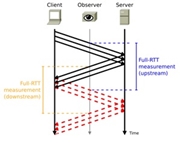
Project Title:
Graph Neural Networks for Service Assignment
Supervisors:
Dor Harris, Eran Tavor
Description:
Graph Neural Networks (GNN) is a novel approach and a class of deep learning methods designed to perform inference on data described by graphs. These are neural networks that can be directly applied to graphs, and provide an easy way to do node-level, edge-level, and graph-level prediction tasks.
In this project you will use GNN in order to solve a graph theory problem that have a strong connection to realistic problems, you will need to learn how to use GNNs and implement such network that apply to the problem that will be specifically presented to the students that do the project.
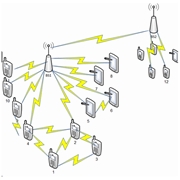
Project Title:
RouteNet - Deep Learning Network Performance Estimation Tool
Supervisors:
Barak Gahten, Eran Tavor
Description:
RouteNet is an innovative network performance prediction tool. It is a novel network model based on Graph Neural Network (GNN) that is able to understand the complex relationship between topology, routing, and input traffic to produce accurate estimates of the per-source/destination per-packet delay distribution and loss. The purpose of this project is to validate the RouteNet tool and adapt it to new networks.

Project Title:
QUIC Congestion Control Analysis
Supervisors:
Eran Tavor
Description:
QUIC is a secure general-purpose, encrypted, multiplexed, and low-latency transport protocol designed from the ground up to improve transport performance for HTTPS traffic. QUIC has recently (May 2021) became RFC standard (RFC 9000) and is expected to become the dominant transport protocol in the Internet over TCP. QUIC has many features that were designed to overcome TCP’s drawbacks. In QUIC the sender may unilaterally choose several congestion control mechqnisms. The purpose of this project is to install one of the existing QUIC implementations, implement a QUIC client-server connection, chose KPIs (Key Performance Indicators) and analyze the mechasnism.

Project Title:
Wifi / BT packet analyzer
Supervisors:
Eran Tavor
Description:
Wifi and Bluetooth devices are everywhere: Laptops, Tablets, Watches, Security cameras, Smart-House devices, Vehicles, Public and non-Public hotspots …
The purpose of this project is to build a Wifi and BlueTooth packet analyzer and explore the information that can be legally collected by walking around in public (Haifa/ Technion/…).
The students will use RaspberryPi 4 or ESP32 and open-source software tools to build a MAC sniffer.

Project Title:
QUIC NS3 Simulator Extension
Supervisors:
Eran Tavor
Description:
QUIC is a secure general-purpose, encrypted, multiplexed, and low-latency transport protocol designed from the ground up to improve transport performance for HTTPS traffic. QUIC has recently (May 2021) became RFC standard (RFC 9000) and is expected to become the dominant transport protocol in the Internet over TCP. QUIC has many features that were designed to overcome TCP’s drawbacks. The students will install a QUIC module for the industry standard NS3 simulator and demonstrate key features of the QUIC protocol.

Project Title:
RaspberryPi4 IOT Switch
Supervisors:
Eran Tavor
Description:
P4PI is P4 (Data plain programming language) on Raspberry PI SBC (Single Board Computer used in many implementations including IOT). P4PI is a small scale functional programmable switch/Router based on open source code (T4P4S P4 Complier) and open source hardware.
In this project the students will develope a private encrypted network over the P4PI infrastructure.

Project Title:
QUIC Sniffer - Efficient Cardinality Estimator
Supervisors:
Eran Tavor
Description:
QUIC is a secure general-purpose, encrypted, multiplexed, and low-latency transport protocol designed from the ground up to improve transport performance for HTTPS traffic. QUIC has recently (May 2021) became RFC standard (RFC 9000) and is expected to become the dominant transport protocol in the Internet over TCP. In this project the student will use a sniffer implemented in a preveous project, implement an efficient cardinality estimator of QUIC connections (how many different QUIC connections can be observed) and demonstrate the sniffer in the lab.

Project Title:
Color-Control Protocol for Mobile Ad-hoc NETwork (MANET) with Half-Duplex Multi-Channel Reception
Supervisors:
Prof. Reuven Cohen Aviel Glam (Rafael)
Description:
Mobile Ad-hoc NETwork (MANET) is a wireless network of mobile nodes characterized by rapidly changing connectivity and channel conditions. A central control or reliable infrastructure are also absent in this kind of network. The challenging conditions gave rise to many protocols both in the Network layer (such as Destination-Sequenced Distance Vector - DSDV) and the Link layer, Medium Access Control (MAC) in particular. One of the common standard MAC protocols is Carrier Sense Multiple Access / Collision Avoidance (CSMA/CA). Most of the protocols (the ones named before included) were designed for nodes working in a single channel (single frequency) and half-duplex regime – when a node transmits it cannot receive and vice-versa. In This project we will focus on a system where the nodes are still half-duplex, but have Multi-Channel Reception (MCR) i.e. when receiving a node can get several messages, one in each channel. Transmission is done in a single channel.
A new protocol – color control - has been suggested lately to use the advantages of MCR. The goal of this project is to implement the new protocol and conduct a comparative analysis to test its merit.
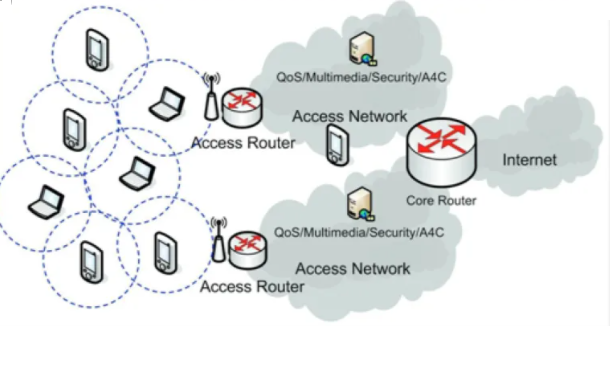
Project Title:
MANET Traffic Performance Prediction Machine Learning based Tool
Supervisors:
Dor Harris
Description:
Mobile Ad-hoc NETworks (MANET) is a communication platform for wireless first response units that creates a temporary network without any help of any centralized support. MANET is characterized by its rapidly changing connectivity and bandwidth over the communication links. Mobile Ad Hoc Network is a collection of wireless hosts that creates a temporary network without any help of any centralized support. At the same time, the application runs on the units often requires strict availability of end to end bandwidth and delay.
It is essential to be build an optimization tool that will be able to predict the traffic bandwidth or the delay performance once the network topology changes or a new application starts running. Developing such tool requires network modeling. Nowadays, network models are either based on packet-level simulators or analytical models (e.g., queuing theory). Packet–level simulators are very costly computationally, while the analytical models are fast but not accurate. Hence, Machine Learning (ML) arises as a promising solution to build accurate network models able to operate in real time and to predict the resulting network performance according to the target policy, i.e maximum bandwidth or minimum end-to-end delay.
Recently, Graph Neural Networks (GNN) have shown a strong potential to be integrated into commercial products for network control and management. Early works using GNN have demonstrated capability to learn from different network characteristics that are fundamentally represented as graphs, such as the topology, the routing configuration, or the traffic that flows along a series of nodes in the network. In contrast to previous ML-based solutions, GNN enables to produce accurate predictions even in networks unseen during the training phase.
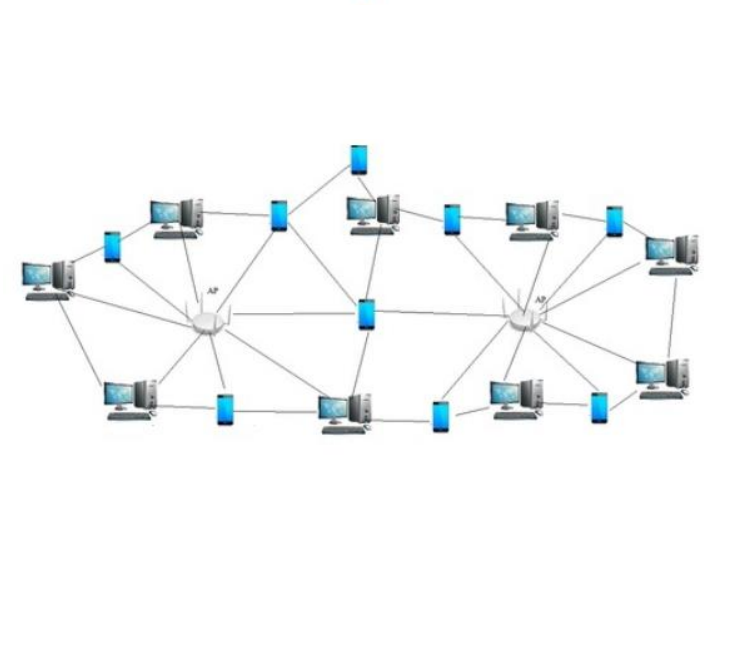
Project Title:
Deep Learning based Traffic Classification – Further investigation
Supervisors:
Barak Gahtan
Description:
Deep Learning (DL) obviates the need to select features by a domain expert because it automatically selects features through training. This characteristic makes DL a highly desirable approach for traffic classification, especially when new classes constantly emerge and patterns of old classes evolve. Another important characteristic of DL is that it has a considerably higher capacity of learning in comparison to traditional ML methods, and thus can learn highly complicated patterns. Combining these two characteristics, as an end-to-end approach, DL is capable of learning the non-linear relationship between the raw input and corresponding output without the need to break the problem into the small sub-problems of feature selection and classification. To achieve this goal, DL requires sufficient labeled data and adequate computation power. In this project, we will deploy a framework for traffic classification task, including data collection and cleaning, feature selection, and model selection.
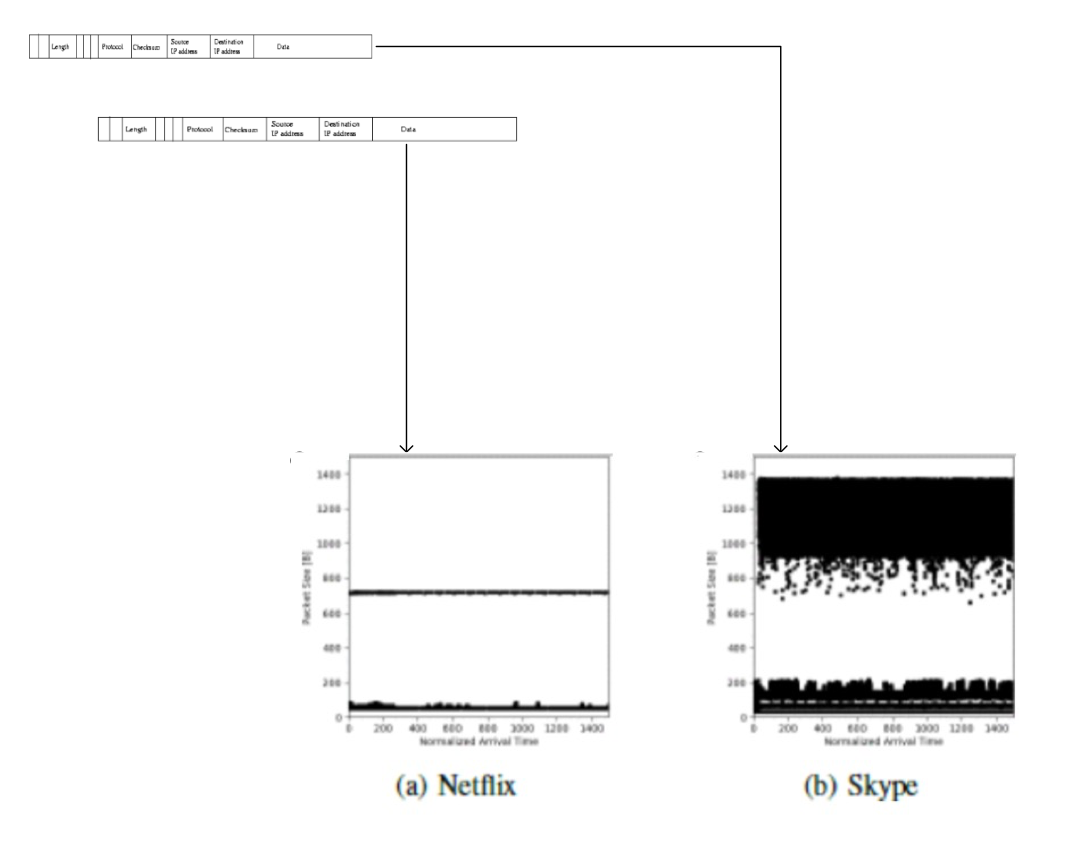
Project Title:
Routing visualization
Supervisors:
Barak Gahtan
Description:
1. The students will implement three algorithms for the dissemination of data through a given static topology. Each node will have a queue for each of its next hop. One of those algorithms will be a greedy algorithm (students will define the specifics). The different algorithms will decide how to move the packets through the network, until no data is left to transmit.
2. The students will implement a simulator for the different algorithms they have proposed. The simulator will include visual tools for monitoring how the packets traverse through the graph.
3. The students will compare the implemented algorithms and explain the trade-off between each algorithm. The routing choices as well as time metrics for the dissemination of the data. The students should also explain the reason they chose those metrics.
